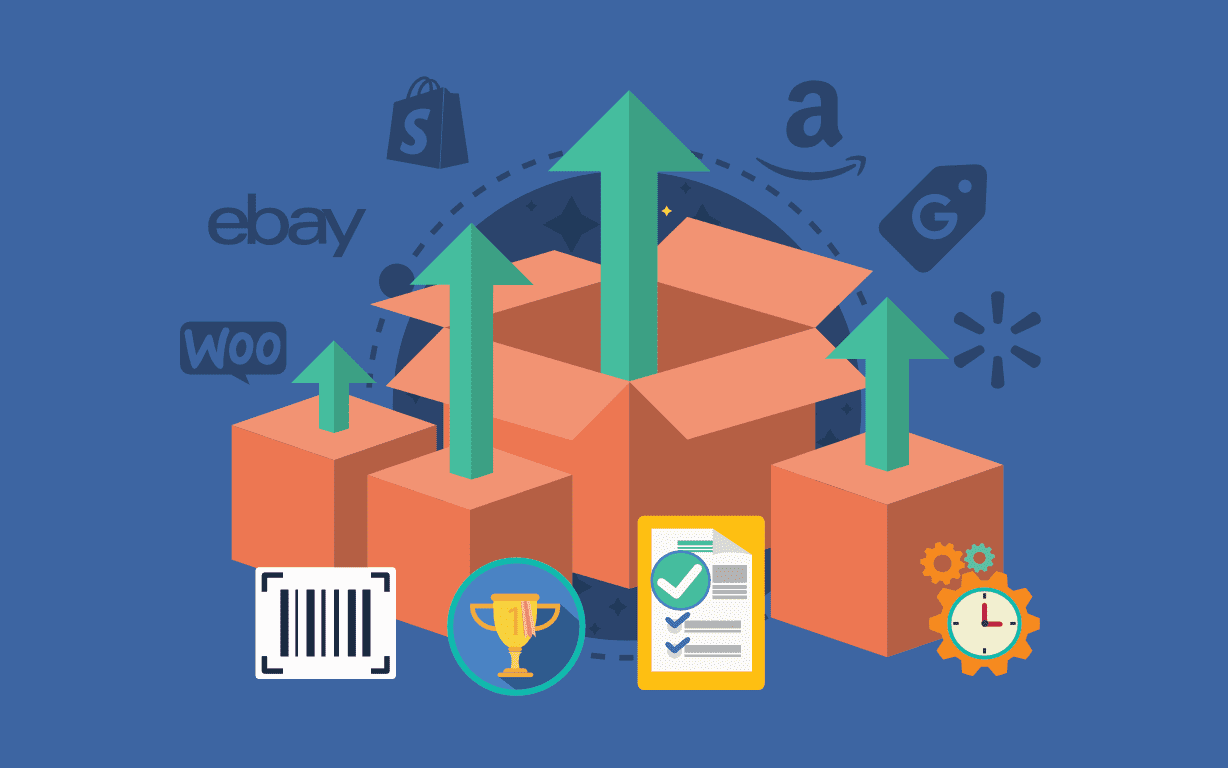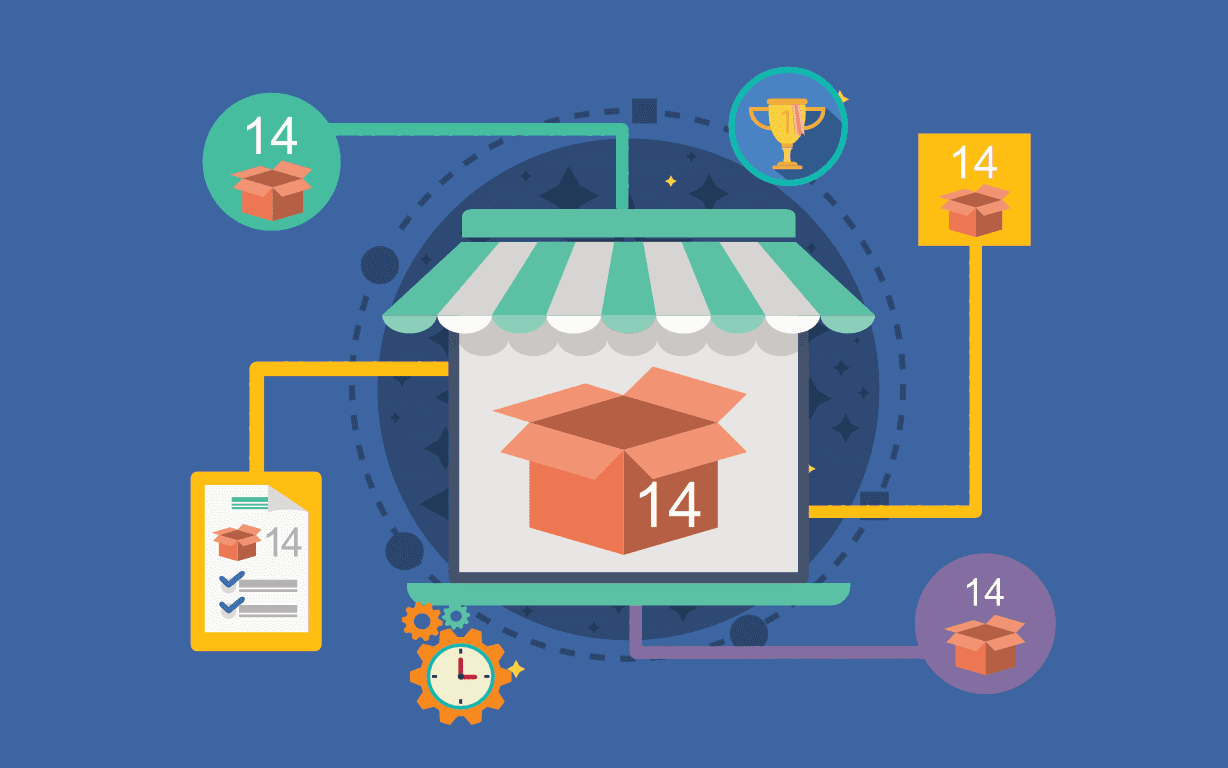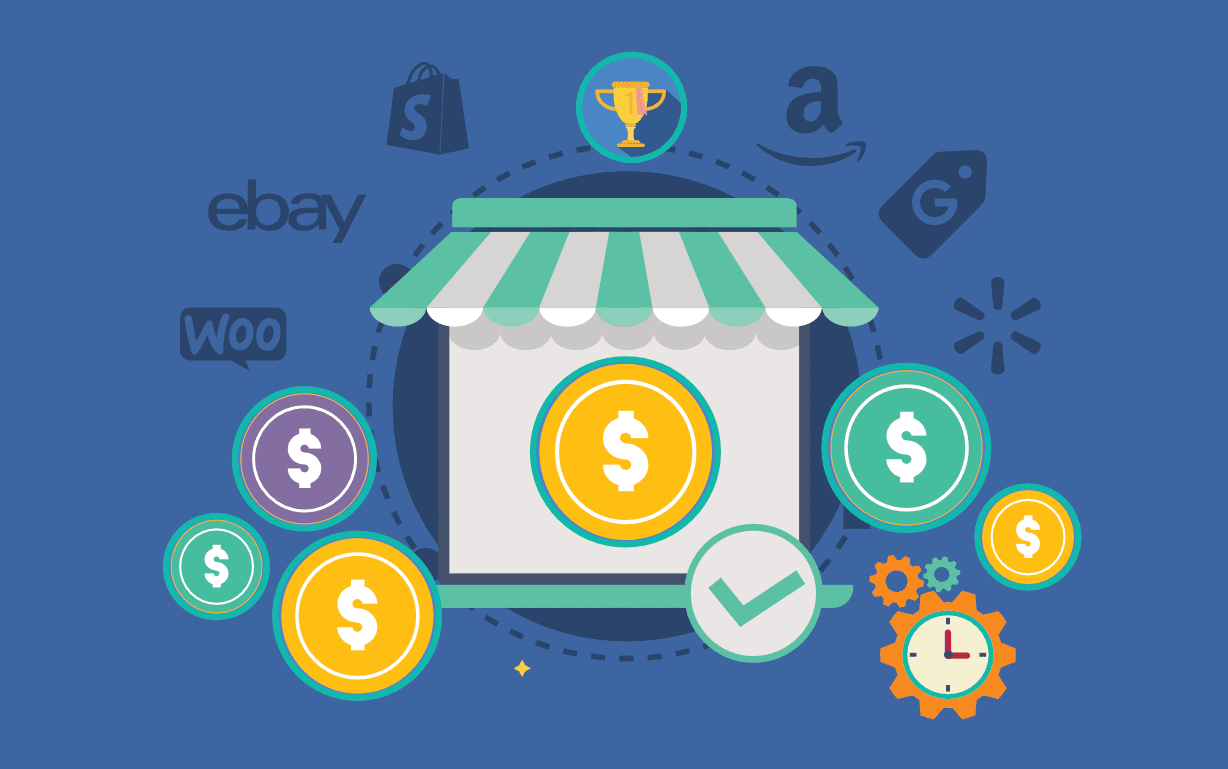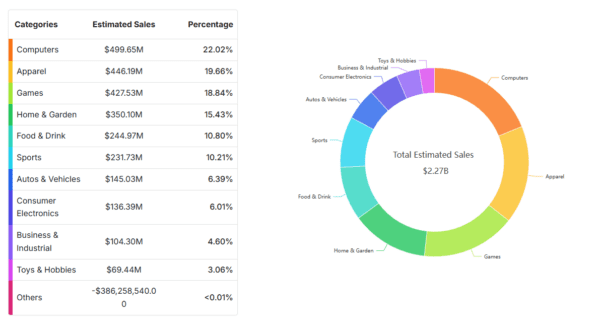There are many reasons why people are increasingly looking into building their own online business. For some, the prospect of freedom from their grueling commutes and nine-to-five jobs is extremely tempting. Meanwhile, others are enticed by the minimal barriers to entry, low overhead, and high margins. And, there are also those who want round-the-clock access to a global market.
With worldwide e-commerce sales amounting to more than $3.5 trillion in 2019, this industry is undoubtedly booming, filled with opportunities and the chance of success.
Whatever your reasons are for starting an online business, this global figure undoubtedly indicates that e-commerce is a profitable – if not, lucrative – option.
So, if you’re ready to build a successful online business with drop shipping, then let’s get started.

What is Dropshipping?
An innovative business model that has revolutionized the industry, dropshipping involves three key stakeholders: the manufacturer, the customer, and the retailer.
The manufacturer is responsible for conceptualizing, creating, and manufacturing the products themselves. They’re also the ones in charge of storing inventory and shipping orders on behalf of the retailer. If a particular item is returned because it is damaged or defective, then they must replace it, as well.
On the other hand, the retailer – or, you – mainly takes care of the digital storefront, rebranding the manufacturer’s products as their own and selling them through a website. Your tasks also include marketing the items through advertising channels like social media platforms and the like. To add to that, you’re also responsible for customer service and setting prices. The latter, in particular, can be a tricky thing to do since you have to balance being affordable enough to entice buyers with being high enough to ensure that your business earns a tidy profit.
Lastly, any business would be lost without the customer. Buyers will purchase the products from the retailer, reaching out to them if they have any questions or if any issues arise.
In short, this is how drop shipping works:
A customer purchases a product from your digital storefront at the retail price that you’ve set.
This order, which you pay for at wholesale price, is forwarded to your manufacturer.
The manufacturer packages the product under your business name and ships it directly to the customer.
Naturally, this business model is very appealing since you don’t have to purchase and store stock, assuming the risk of unpurchased inventory, in the process. Moreover, it doesn’t require you to put up a lot of capital upfront, which is one of the main reasons why people are hesitant to start a business.

The Dropshipping Industry at a Glance
Drop shipping is increasingly becoming a popular business model among online sellers, thanks to its promise of high revenues. Most drop shippers make an average profit of approximately 18% per sale, although some have pinned down this figure to as high as 40%. With this, it’s common to see them make a revenue of anywhere between $1,000 and $50,000 per month, which translates to between $100 and $20,000 in profit.
As rough as these estimates may be, they’re certainly more than enough to convince many online sellers to embrace dropshipping as their main business model. In 2018, its market size was valued at a whopping $102.2 billion and experts have largely agreed that this figure has grown astronomically since then.

Starting a Dropshipping Business in 4 Easy Steps
A drop shipping business is extremely easy to start and can even be done in four simple steps. With these, you’ll get your online store up and running in no time at all.
STEP 1: Determine your Niche Market
The barriers to starting a dropshipping business may be minimal to none, but this doesn’t mean that you should haphazardly sell products, trying to see which one sticks through trial and error. Rather, take the time to gather ideas – what products are people talking about these days? What items could be trending in the future?
The success and profitability of your dropshipping business are hinged on the niche market that you get into. For example, entrepreneur Tim Kock once created a store that sold pineapple-themed products, which failed miserably. On his second attempt, though, he decided to go with wristwatches and made nearly $7,000 in just eight weeks.
Tim’s case study shows how critical your niche market is, so don’t be afraid to take some time doing market research and looking into different ideas.
In determining your niche market, here are some factors to take into consideration:
- Are there any products related to your passions and interests? Can you see yourself talking at length about them?
- Are you encountering any problems in life that can be solved by using a particular product?
- Is the niche market that you’re interested in oversaturated? Will you be able to set yourself apart from the competition? More importantly, is it worth putting in the time and effort to beat them?
- How profitable can your niche market be? Will you be able to ensure a profit margin of at least 40% – after shipping costs, seller fees, and taxes – on every product that you sell?
STEP 2: Identify the Competition
The e-commerce industry is massive, which means that you won’t be the only seller in your niche market. If you want to set yourself up from the rest of the competition, then you have to focus on creating and implementing strategies that will allow you to operate more efficiently.
One of the very first things that you should do is analyze the product listings of your competitors. How do their photos look? How do they write their descriptions and captions? What is their general price range like? With this information, you’ll be able to determine what areas you need to improve on, as well as what unique selling points you can offer to customers.
Additionally, take the time to read the reviews and feedback left by your competitors’ buyers. This is a great way of identifying what they liked and what they didn’t like, which can help you enhance your approaches to marketing and customer service.
STEP 3: Pick a Manufacturer
After setting your niche market and conducting research on the competition, it’s time to establish a relationship with a manufacturer. Many of the world’s dropshipping suppliers are located in countries like China but thanks to the Internet, you don’t have to book tickets and do the legwork yourself.
Websites like Oberlo allow online sellers to easily import products from manufacturers directly into their digital storefronts. It automates every single step of the process – from updating inventory to fulfilling orders and to customizing the product listings. However, you can also source suppliers from trade fairs and professional networking conferences, as well as from good ol’ Google.
You should have a list of at least five potential suppliers to choose from. Once you begin reaching out to them, take note of the following:
- Wholesale prices
- Minimum order quantities
- Shipping times
- Client support
Be prepared for trade-offs, though; extremely low prices may come at the cost of large minimum order quantities, and the like. It may also be difficult to communicate with them, especially if English isn’t their first language.
With this in mind, identify which of those factors you prioritize the most and work from there.
STEP 4: Create your Digital Storefront
Building a website is a time-consuming and costly venture. However, platforms like Shopify and Wix have made the process simple and easy, allowing people to create a fully-functioning and beautifully-designed website in a matter of minutes. More than that, though, they also set up protected payment schemes and “add to cart” functionalities, which means that the only thing you’ll have to worry about is your business name and the page’s color scheme!
Before launching a website, make sure that you already have your domain name and registration in place. If not, then head over to websites like GoDaddy, Namecheap, and Bluehost to get it all sorted out.
Once you’ve made sure that your website works perfectly and seamlessly, you should now turn your attention to marketing and advertising. Arguably the two most important aspects of a dropshipping business, both of these will help you attract customers and land your first sale.
To market your online dropshipping business, consider the following channels:
- Social Media
- Influencer Marketing
- Email Marketing
- Google Search Results
Explore all these different channels to figure out which one best fits your brand and your target market. Not all of them will yield the same results, so be very thorough with your experimentation. Determining how to market and where to market will not only keep your costs down in the long run, but it will also help attract the right kind of customers to your site.

Use SellerChamp™ to Enhance your Online Business
When it comes to running an online dropshipping business, a website shouldn’t be your only distribution channel. Rather, take advantage of platforms like Amazon and eBay, both of which give you access to a massive global marketplace. Doing so will help increase your income streams and grow your customer base.
Understandably, you may feel hesitant about tapping into these channels because of the extra work that they pose. After all, administrative tasks like listing products and updating inventory already take a ton of effort when you’re doing them on your website – what more if you’re selling across three different channels?
Well, SellerChamp™ makes this incredibly easy and quick.
With their program, you can list your products across all your active marketplaces in just a few minutes. Besides the photos, it can also pull your descriptions and prices, uploading them instantly on whatever platform it is that you’re using.
They even take care of inventory management and price changes for you, updating these automatically across all your selling channels. This means that you don’t have to keep three different tabs open just to change the price on a single listed product.
If you want to take your online drop shipping business to greater heights of success, then SellerChamp™ will undoubtedly get you there.

Final Thoughts
Those looking into launching an online business will undoubtedly be tempted by drop shipping. And, why shouldn’t they? This is an incredibly powerful strategy that will allow you to reap profits without spending a ton of money. So, start your drop shipping business today and work your way towards building a successful online empire.
















